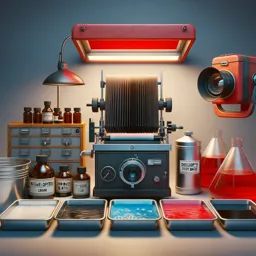Introduction
Adobe Photoshop stands as the industry standard for digital image editing, especially when it comes to portrait enhancement. Whether you’re a photographer or a graphic designer, learning how to retouch and enhance portraits is a vital skill. This article explores core Photoshop techniques for portrait enhancement, focusing on practical methods to boost your workflow and achieve studio-quality results.
1. Skin Smoothing and Blemish Removal
One of the most sought-after features in professional portraits is flawless skin. In Photoshop, achieving smooth skin without losing natural texture is possible through techniques such as frequency separation:
- Healing Brush Tool: Use this tool to remove blemishes, small scars, and stray hairs while preserving skin details.
- Frequency Separation: This advanced method separates the texture and color layers, allowing for precise retouching of each aspect. Use Gaussian Blur and Apply Image features to set up your layers before retouching.
2. Dodge and Burn Techniques
Dodge and burn allow you to sculpt the face by enhancing highlights and shadows. This process adds depth and dimension, emphasizing key facial features.
- Create new layers set to Soft Light blend mode and paint gently with a soft brush in black (burn) and white (dodge) over the portrait.
- Control the strength with opacity, ensuring the result remains subtle and realistic.
3. Enhancing Eyes and Teeth
Sparkling eyes and bright teeth can transform a portrait. Photoshop offers several tools for this purpose:
- Adjustment Layers: Use Hue/Saturation or Brightness/Contrast layers, masking them to isolate the eyes or teeth. Reduce yellow and slightly increase brightness for teeth; for eyes, boost clarity by increasing contrast and sharpening the iris.
- Sharpening Tool: Apply sparingly to catchlights and irises for natural emphasis.
4. Color Grading and Tone Adjustments
Consistent color grading ties your portrait series together and sets the mood. Try using:
- Selective Color: Make subtle tweaks to skin tones to achieve a healthy, even complexion.
- Gradient Maps: Add depth or a stylized look by mapping new colors to shadows, midtones, and highlights.
Conclusion
Enhancing portraits in Photoshop goes far beyond simple retouching. By mastering these essential techniques—skin smoothing, dodge and burn, eye and teeth enhancement, and color grading—you can elevate your portrait work and create captivating images that impress clients and viewers alike. As always, practice and restraint are key: let your edits accentuate natural beauty without overprocessing, ensuring your subjects look their very best.

























